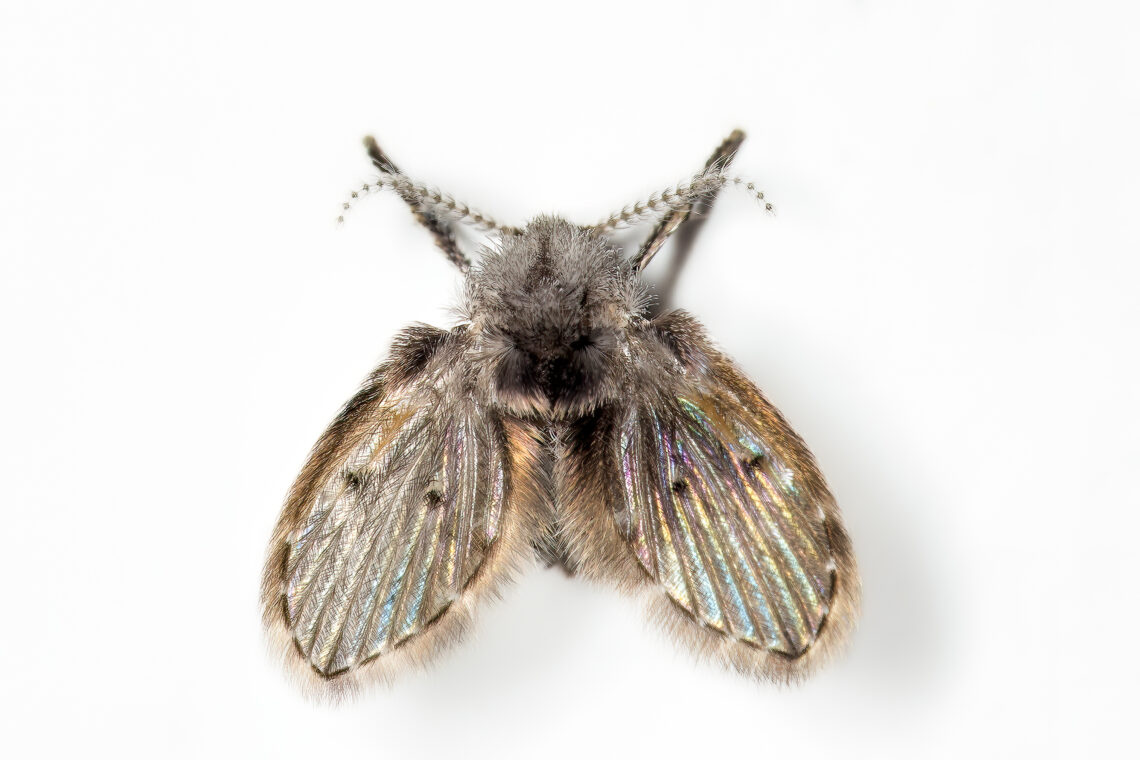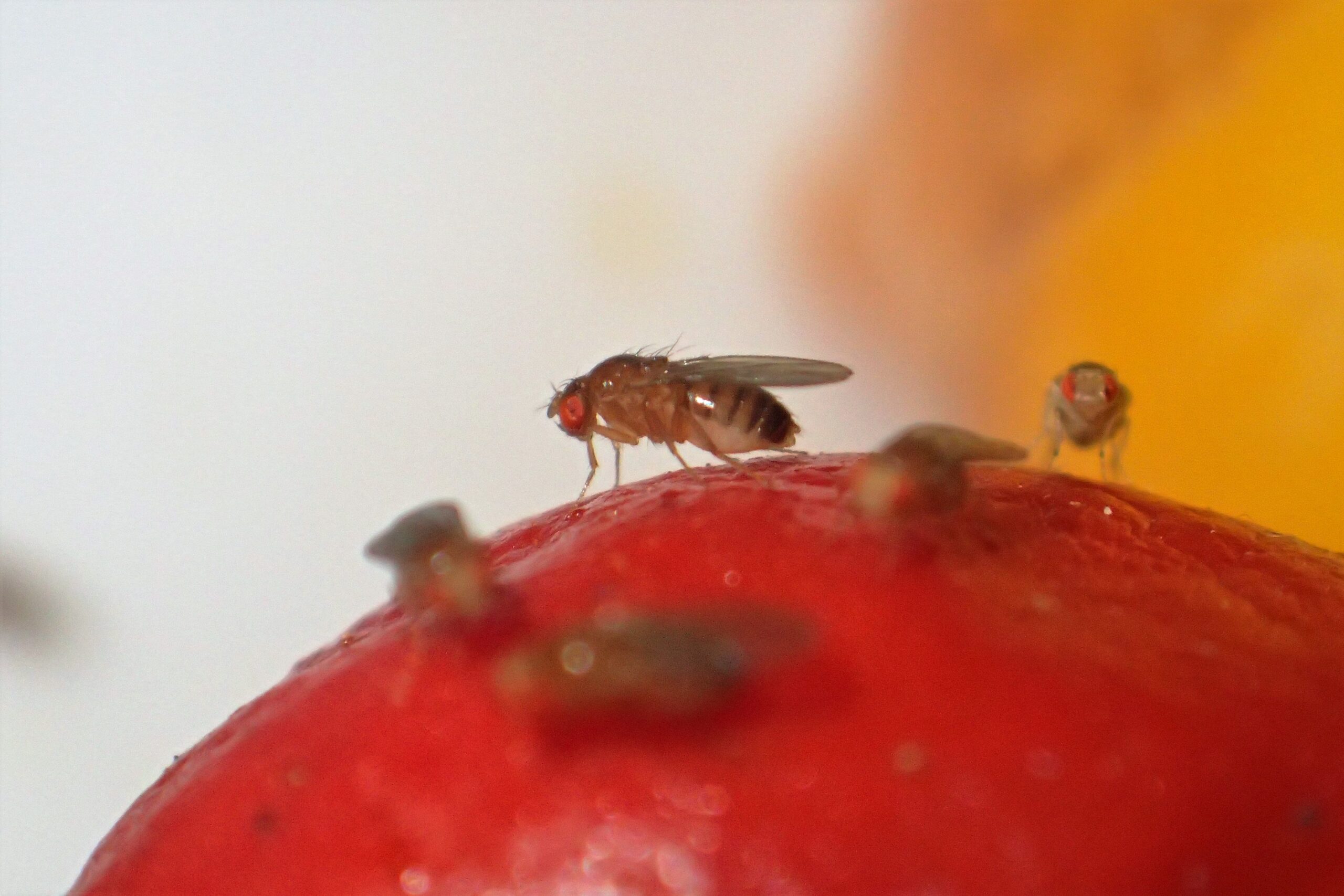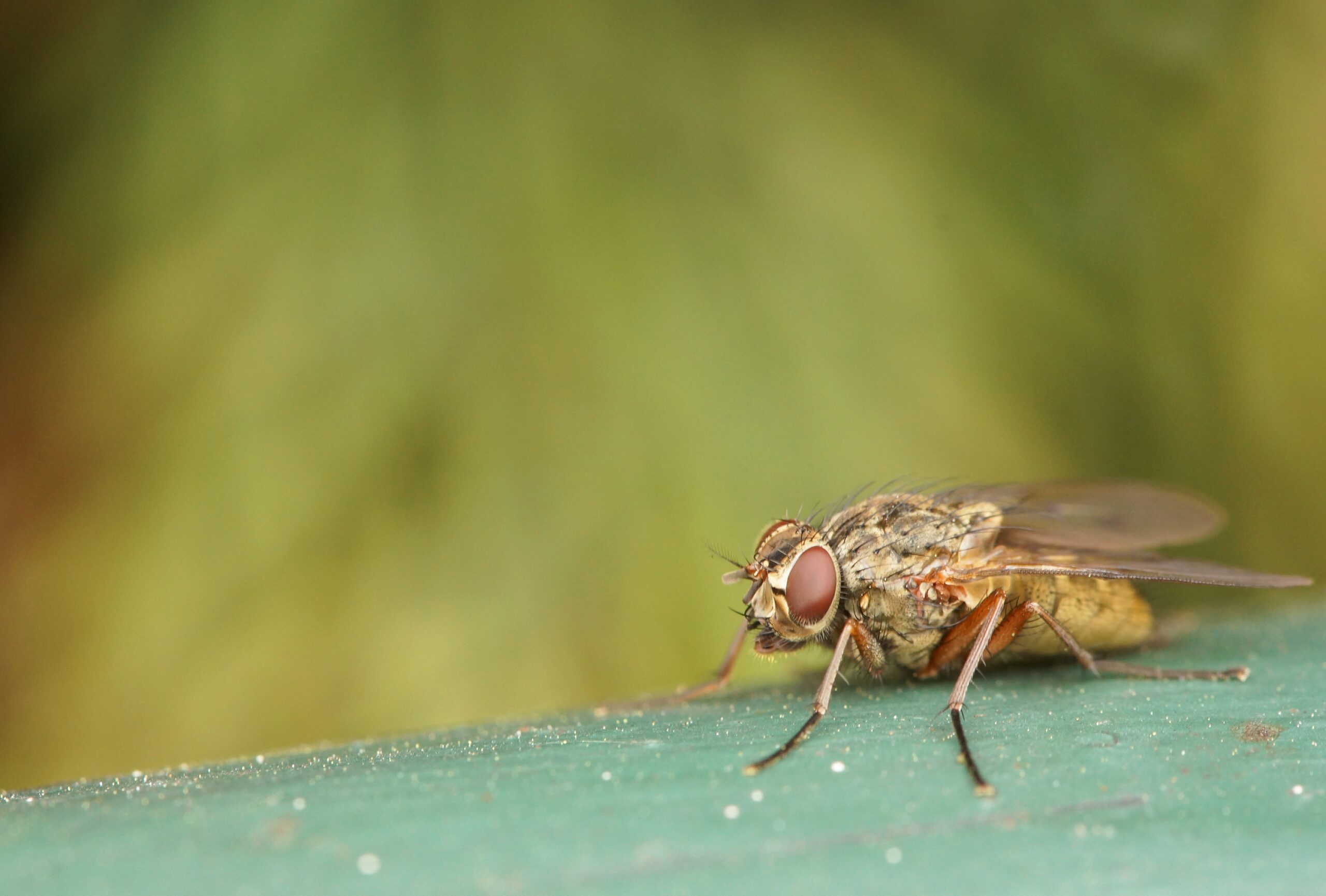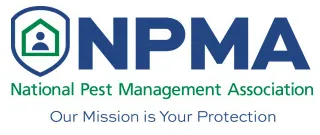Drain Flies
General Information About Drain Flies in Nashville, TN

General Information
All three flies can be loosely grouped as “small flies attracted to decaying organic matter”. However, their specific appearances, breeding habits, and preferred environments differ significantly.
Fruit Flies: Prefer overripe or fermenting fruits and vegetables.
Phorid Flies: Breed in a wider range of decaying matter, including drains, sewage lines, and sometimes even decaying animal matter.
Drain Flies: Specifically breed in the organic gunk found within drains.
What are the differences?
- Drain Flies: Fuzzy, moth-like wings and lighter body color.
- Drain Flies: Weak fliers that make short, jerky movements.
- Fruit Flies: Steady, hovering flight.
- Fruit Flies: Usually tan/brown with red eyes.
- Phorid Flies: Darker colored with a humpbacked appearance.
- Phorid Flies: Erratic, darting flight with short bursts of movement.
Where are the Flies found?
Flies can be found in various indoor and outdoor environments. In Mt. Juliet, TN, and similar regions, they are commonly found in:
Drain Flies
- Bathrooms: Hovering around showers, bathtubs, and sinks. Larvae develop within the drainpipes.
- Kitchens: May be found around kitchen sinks, especially if drains are slow or have buildup.
- Other moist areas: Damp basements, laundry rooms, or anywhere with a slow or clogged drain with organic buildup.
Fruit Flies
- Kitchens: Near bowls of fruit, especially overripe or fermenting produce. Also found around trashcans, compost bins, and anywhere with spills of sugary liquids.
- Restaurants and Bars: Attracted to fermenting beverages, produce storage areas, and anywhere food waste might be present.
- Vineyards and Orchards: Can be found around damaged or fallen fruit.
Phorid Flies
- Indoors:
- Kitchens and bathrooms: Associated with drains, garbage disposals, and leaky pipes.
- Basements and crawl spaces: May be present if these areas are damp or have decaying organic matter.
- Outdoors:
- Garbage dumps and compost piles: Attracted to large amounts of decaying material.
- Septic systems: Can breed in malfunctioning septic lines.
- Around decaying animal matter: Some species are attracted to carrion.
Drain Flies

General Information for Drain Flies
Adult drain flies, are commonly seen resting on the walls of bathrooms, building exteriors, and showers near appropriate larval habitats. The larvae can be found feeding on the film of wet organic material that can accumulate in drains. Flies are non-biting and are not capable of transmitting any known pathogens; however, large infestations of drain flies can cause respiratory problems due to the possibility of inhaling fine hair-like scales that can fall off their bodies and wing.
Drain flies are holometabolous insects, going through egg, larval, pupal, and adult life stages. Typically, drain flies complete their life cycle in 21 to 27 days.
Eggs: Females deposit egg masses on the wet or moist soil, sides of drains, or other surfaces and will not lay eggs on dry surfaces. Single eggs and masses up to 100 eggs have been reported; however, masses of 15 to 40 eggs are most common. Eggs are small, no larger than 1 mm, and are transparent.
Larvae: The larvae resemble mosquito larvae, in that they are slender, white to creamy brown with a distinct head, well-developed mouthparts, and an apparent siphon. The body is made up of 11 segments, with the last two containing paired breathing siphons, often protected by four fleshy appendages. This is the longest of its life stages, lasting around nine to 15 days.
Adults: Adults have a mottled appearance due to the short, dense hair-like scales present along the wing veins. Compared to other nematoceran flies, they do not have strong wing muscles, maneuvering mainly by hopping, running, or with short flights. Males emerge before females and live only a few days. Males are approximately 2.5 to 3 mm in length, with females slightly larger, on average 4 to 4.5 mm. In outdoor situations, adult emergence starts in the beginning of spring and peaks in late summer in temperate regions. Sewage filters with open walls and larger ballast surfaces are ideal larval habitats, as these areas provide a damp environment large enough for the flies to avoid getting flushed down the drain and provide substantial food sources for larvae.
Fruit Flies

General Information for Fruit Flies
Fruit flies are common in homes, restaurants, supermarkets and wherever else food is allowed to rot and ferment. Adults are about 1/8 inch long and usually have red eyes. The front portion of the body is tan and the rear portion is black. Fruit flies lay their eggs near the surface of fermenting foods or other moist, organic materials. Upon emerging, the tiny larvae continue to feed near the surface of the fermenting mass. This surface-feeding characteristic of the larvae is significant in that damaged or over-ripened portions of fruits and vegetables can be cut away without having to discard the remainder for fear of retaining any developing larvae. The reproductive potential of fruit flies is enormous; given the opportunity, they will lay about 500 eggs. The entire lifecycle from egg to adult can be completed in about a week.
Fruit flies are especially attracted to ripened fruits and vegetables in the kitchen. But they also will breed in drains, garbage disposals, empty bottles and cans, trash containers, mops and cleaning rags. All that is needed for development is a moist film of fermenting material. Infestations can originate from over-ripened fruits or vegetables that were previously infested and brought into the home. The adults can also fly in from outside through inadequately screened windows and doors.
Fruit flies are primarily nuisance pests. However, they also have the potential to contaminate food with bacteria and other disease-producing organisms. The quickest way to eliminate fruit flies are to throw away the contaminated food or eliminate the source quickly before they spread to other places.
Phorid Fly

General Information for Phorid Flies
The phorids are a large family of small flies (0.4 – 6 mm) with more than 3500 species worldwide. Other common names for flies in this family include: humpbacked, coffin, and scuttle flies. As a group, they have a wide diversity of shape and form, and their larvae gain sustenance from a variety of sources. Most of the species, however, deposit their eggs in decaying animal or plant material and it is in these instances that they come into conflict with man.
Larvae are cylindrical, tapering toward the head and cream in color. They average about 3 mm in length.
Total developmental time from egg through pupal stages is approximately 10 days. Adults average 3 mm in length, vary in color from a light brown to yellow and have the characteristic thickened and shorted costal wing vein of other phorids. Depending on temperature, they can survive for 1 – 2 months.
These flies are found feeding in many types of substances. Homeowners should first search for rotting bags of potatoes, onions or other stored tubers. When no apparent food source can be located consideration should be given to the possibility of broken septic lines or cracked septic tanks. Consult with a reputable plumbing firm that can provide examination of the lines using a flexible scope and/or injection of smoke to determine if lines are fractured. Scoping doesn’t always reveal cracks but smoke will follow the path used by adult flies when entering buildings.
Contact Information
6160 Hampton Hall Way
Hermitage, Tennessee, 37076, United States
Mon-Fri
8:00 AM - 5:00 PM
Sat
8:00 AM - 12:00 PM
Sun
Closed
Pest Problem? No worries, we can help!
We will help you find the right treatment for your home or business.
Get your free estimate,
no obligation quote
We are committed to maintaining open communication with our valued customers throughout the entire pest control process. If you have any inquiries, need estimates, or have questions about our services, please don’t hesitate to reach out to us at your convenience. We eagerly anticipate the opportunity to serve you in the near future.
6160 Hampton Hall Way
Hermitage, Tennessee, 37076, United States
Sat 8:00 AM - 12:00 PM
Sun Closed



